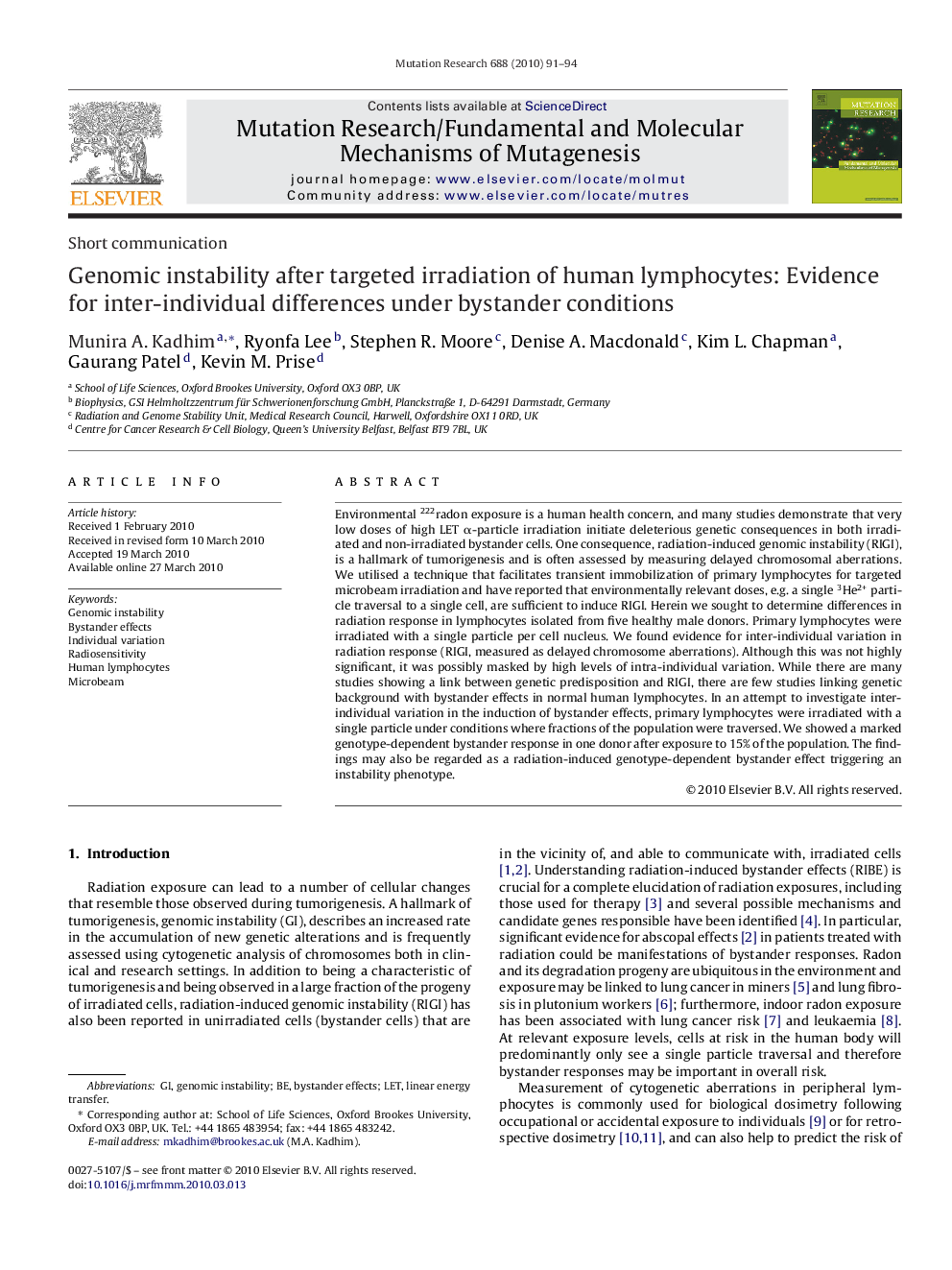| Article ID | Journal | Published Year | Pages | File Type |
|---|---|---|---|---|
| 2146820 | Mutation Research/Fundamental and Molecular Mechanisms of Mutagenesis | 2010 | 4 Pages |
Environmental 222radon exposure is a human health concern, and many studies demonstrate that very low doses of high LET α-particle irradiation initiate deleterious genetic consequences in both irradiated and non-irradiated bystander cells. One consequence, radiation-induced genomic instability (RIGI), is a hallmark of tumorigenesis and is often assessed by measuring delayed chromosomal aberrations. We utilised a technique that facilitates transient immobilization of primary lymphocytes for targeted microbeam irradiation and have reported that environmentally relevant doses, e.g. a single 3He2+ particle traversal to a single cell, are sufficient to induce RIGI. Herein we sought to determine differences in radiation response in lymphocytes isolated from five healthy male donors. Primary lymphocytes were irradiated with a single particle per cell nucleus. We found evidence for inter-individual variation in radiation response (RIGI, measured as delayed chromosome aberrations). Although this was not highly significant, it was possibly masked by high levels of intra-individual variation. While there are many studies showing a link between genetic predisposition and RIGI, there are few studies linking genetic background with bystander effects in normal human lymphocytes. In an attempt to investigate inter-individual variation in the induction of bystander effects, primary lymphocytes were irradiated with a single particle under conditions where fractions of the population were traversed. We showed a marked genotype-dependent bystander response in one donor after exposure to 15% of the population. The findings may also be regarded as a radiation-induced genotype-dependent bystander effect triggering an instability phenotype.
